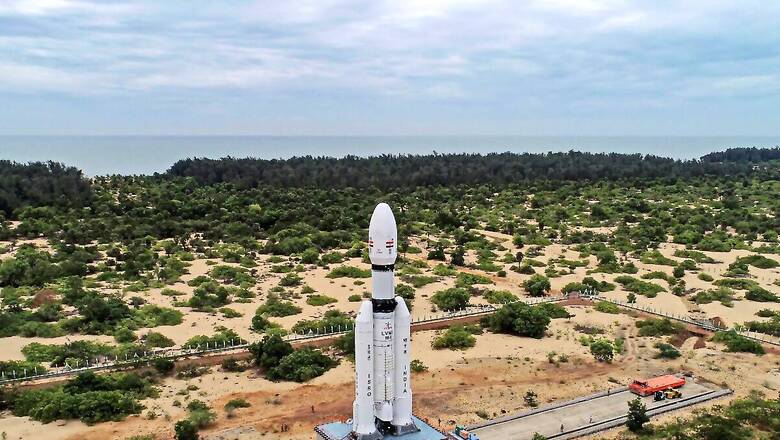
views
There is hope and renewed confidence. Almost four years after it missed its historic lunar landing, the Indian Space Research Organisation (ISRO) is all set to fly to the Moon again. Its heaviest rocket – LVM3 – is all set to lift off from Sriharikota next Friday with Chandrayaan-3.
The mission will launch precisely at 2:35pm on July 14, and within hours, the powerful rocket will park the lunar spacecraft into an elliptical orbit around the Earth. In the days to come, scientists will carry out a series of orbit manoeuvres to raise the spacecraft’s orbit and eventually place it in the Lunar Transfer Trajectory closer to the Moon.
The space agency is determined to demonstrate a safe landing and roving on the lunar surface, and enter the select club of nations that have already achieved the feat – the US, Russia and China.
Building on Past Lessons: Chandrayaan-2 Mission Setback
From making changes in the propulsion system to adding new sensors aboard, ISRO is leaving nothing to chance this time around. A lander hazard detection and avoidance camera and processing algorithm has been added. The lander has been ‘rigorised’ to handle multiple failures in case there is any once the rocket takes off.
“We cannot control something that we have no control over. That’s what happened with Chandrayaan-2. But we have learnt from our experiences, and made corrections based on thorough review. We are confident that the aim will be accomplished this time,” says Dr Seetha Somasundaram, former project director at ISRO’s Space Science Programme Office.
ISRO’s Moon Landing Plans: A Second Chance at History
The 3,900-kg Chandrayaan payload will have a lander, and a rover, and a propulsion module which will remain integrated till the 100km polar orbit around the moon. The rover will only communicate with the lander.
The mission is significant for future interplanetary missions. “A safe landing is very critical for future interplanetary missions. The world has big plans for the Moon, and India would want to be ready,” says Dr Seetha, who was among the key scientists who steered Mars Orbiter Mission (MOM) Mangalyaan to success.
The spacecraft will also carry several in-situ experiments during its mission life – 14 Earth days which is equal to one Lunar day. It will study the thermal properties near the moon’s polar region, measure the seismicity and try to understand the dynamics of the lunar system.
“The next step should be to collect the lunar samples and get them back to Earth for further studies. China accomplished it with their lunar mission last year. This would be crucial with countries now planning a lunar base in years to come, and preparing the Moon as a gateway to explore other planets,” says Gp Capt Ajey Lele (retd), consultant at Manohar Parrikar Institute for Defence Studies and Analyses, New Delhi.
The mission comes around 15 years after India’s first mission to the Moon in October, 2008 which made the crucial discovery of water molecules locked in its minerals.

















Comments
0 comment